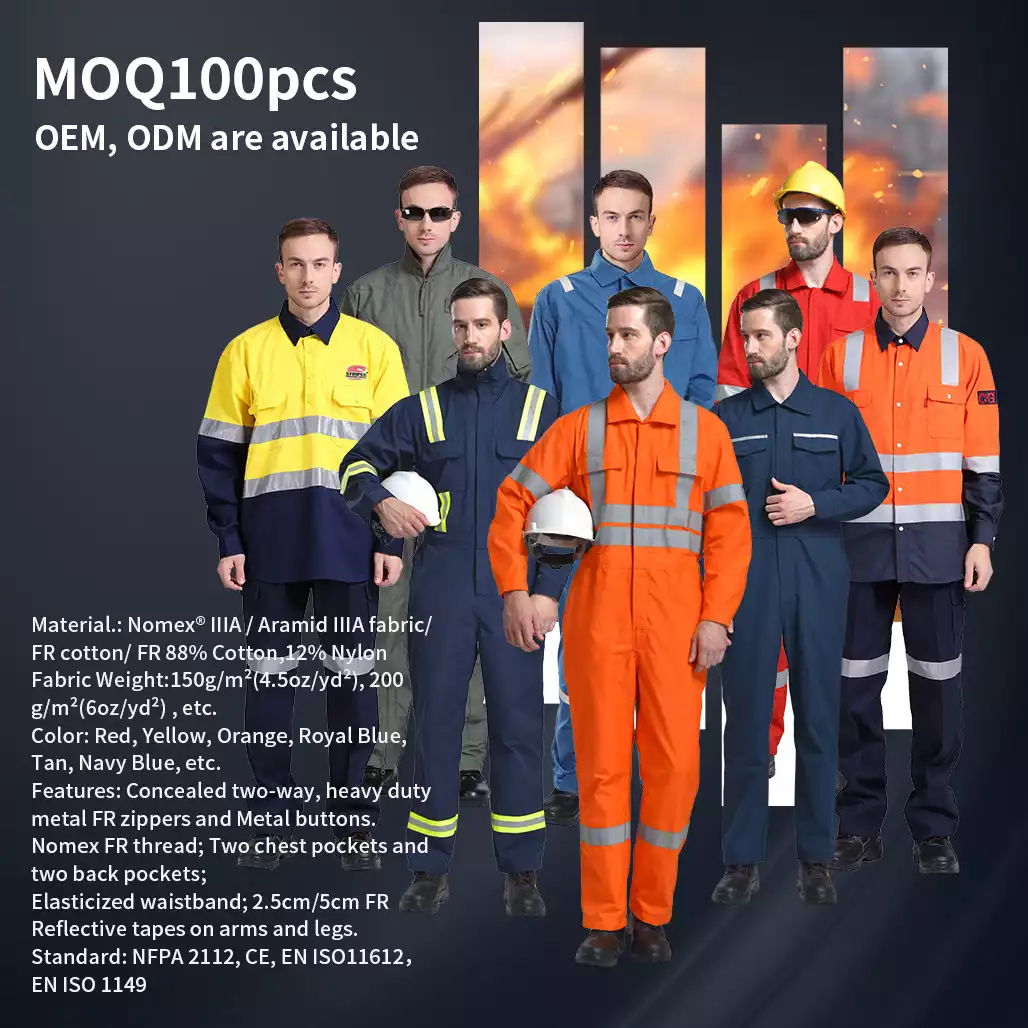
Understanding the Difference Between FR Coveralls and FR Bibs
In the world of flame-resistant (FR) clothing, two popular options are
FR coveralls and bibs. While both serve the purpose of protecting workers from potential fire hazards, they differ in terms of design and coverage. Let's explore the distinctions between coveralls and bibs to help you make an informed choice when selecting the appropriate FR clothing for your needs.
FR coveralls provide full-body coverage in a one-piece garment. They typically feature long sleeves, pants, and an integrated chest or torso section. This design offers comprehensive protection from head to toe against flames, sparks, and heat. FR coveralls are easy to put on and take off, simplifying the process of getting ready for work. They also eliminate the need for separate garments, ensuring consistency in protection. Additionally, FR coveralls are designed to allow for a wide range of motion, enabling workers to perform tasks comfortably without restriction.

FR Bibs, on the other hand, consist of a separate top section (bib) and pants, providing a two-piece garment option. FR bibs offer flexibility, allowing workers to mix and match sizes for the bib and pants, ensuring a customized fit. This flexibility can be beneficial for individuals with different body proportions. The separate bib and pants design of FR bibs provides increased freedom of movement, making them ideal for tasks that require a higher range of motion, such as climbing or bending. Due to the separate design, FR bibs often offer improved breathability compared to one-piece coveralls, allowing for better airflow and heat dissipation.
When deciding between FR coveralls and bibs, consider the specific requirements of the job and the comfort needs of the wearer. Factors such as range of motion, ventilation, and the level of convenience desired should be taken into account. Additionally, ensure that the chosen FR clothing complies with relevant safety standards and regulations.
In conclusion, both coveralls and bibs are effective choices for protecting workers from flame-related hazards. While FR coveralls provide comprehensive coverage and convenience in a one-piece design, FR bibs offer versatility and increased mobility with their separate top and pants. The decision between the two ultimately depends on the specific job requirements and the comfort preferences of the individual. By understanding the differences between coveralls and bibs, you can make an informed decision and select the appropriate FR clothing to ensure safety and comfort in potentially hazardous work environments.
Tags:













